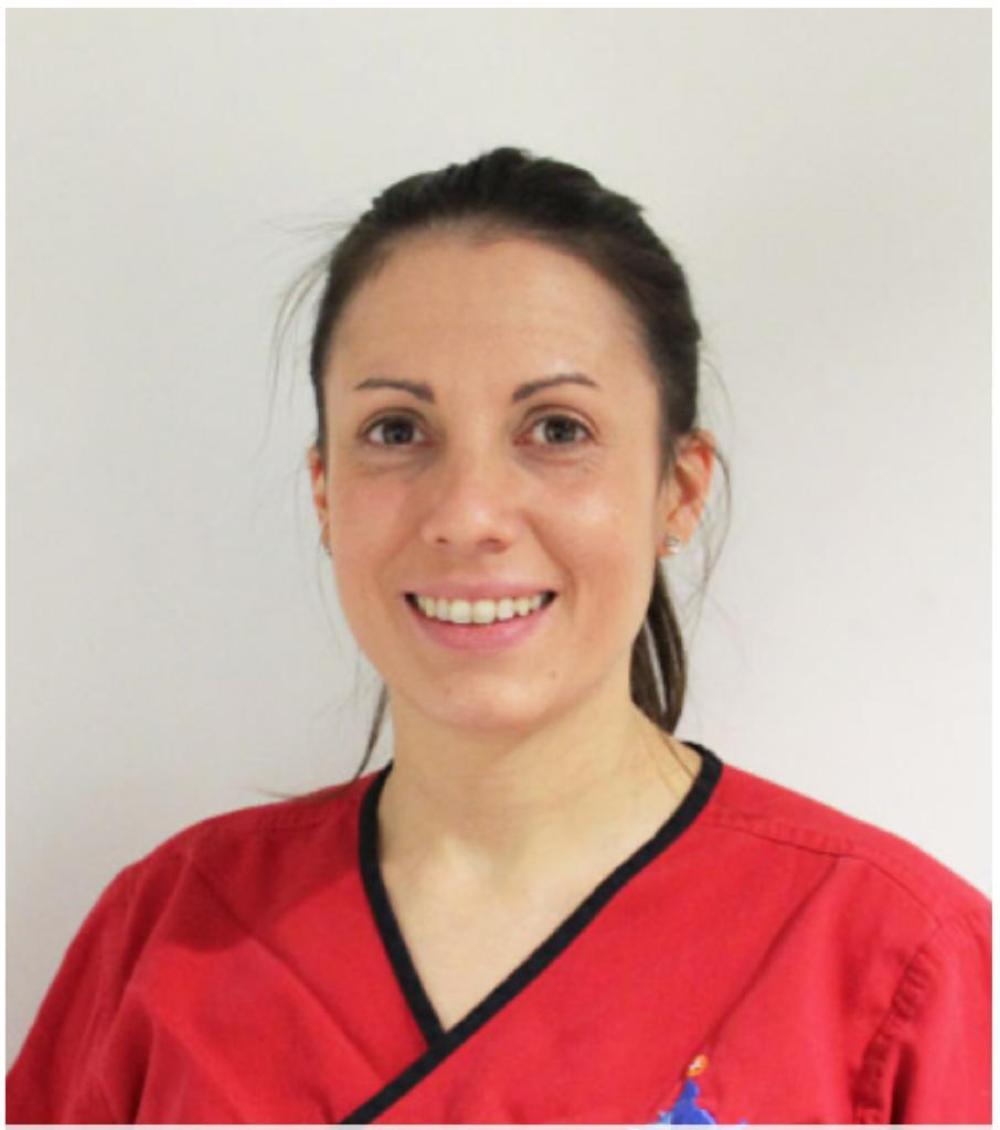Develop your knowledge and practical skills in a range of imaging modalities
This Diagnostic Imaging Nurse Certificate (NCert) programme is for RVNs working in or wishing to advance their skills in this area. The ability to produce high-quality images in a safe environment is essential in accelerating the diagnostic process.
This programme will provide you with the confidence and skills to work with the different imaging modalities and techniques, enabling you to obtain information that can contribute to a wider diagnostic picture. It also offers a practical element with radiographic positioning and Point of Care Ultrasound (POCUS).
What you'll learn:
-
The fundamental principles of radiology, ultrasonography, CT, and MRI and their applications.
-
How to produce high-quality images, manage a safe working environment as well as indications for fluoroscopy, a variety of contrast studies, interventional radiology and POCUS.
-
An understanding of normal anatomy and physiology, and how these impact on the pathogenesis and treatment of medical conditions will be expected.
Why choose this programme?
-
The blended delivery of this programme allows the essential theory of this subject to be presented online in an interactive and engaging way whilst the practical teaching provides skills that can be applied directly in practice.
-
The eight-module programme comprises four face-to-face modules (modules 1, 2, 5, and 6) which will include practical elements where appropriate, and four online learning modules.
-
This comprehensive training, coupled with practical experiences, empowers you to approach challenges in practice with assurance and competence.
Diagnostic Imaging Nurse Certificate (NCert): Why this programme is for you!
Hear what our delegates have to say
Don’t just take our word for it - our delegate feedback speaks for itself.
Key features of this programme
Four two-day modules
Gain a recognised qualification
Access to learning resources
A dedicated Programme Coordinator who will support you every step of the way
A discussion forum for conversation, debate and sharing cases with your peers
Online Study Skill Lessons
Four two-day modules
Gain a recognised qualification
Access to learning resources
A dedicated Programme Coordinator who will support you every step of the way
A discussion forum for conversation, debate and sharing cases with your peers
Online Study Skill Lessons
Programme details
Module Summary
01 - Radiography Principles, Technique and Interpretation
Key learning objectives
- Compare the principles of traditional radiography versus computed radiography and digital radiography. Outline the advantages and disadvantages of each system. Compare and contrast how the image is taken, viewed, and stored with all three systems.
- Appraise radiographic image quality and outline methods to improve image quality.
- Outline the use of a grid, when and why it is used.
- Explain the basic principles of radiographic image interpretation.
- Outline the legal requirements for images obtained, required information and storage requirements.
- Explain the theory of a picture archiving and communication system (PACS). Discuss what this is used for and its benefits in veterinary practice.
- Demonstrate room set up including the machine set up, anaesthetic considerations and room preparation.
- Discuss positioning aids, compare, and contrast the different types of aids including their advantages and disadvantages. Discuss where some aids may be more appropriate than others.
- Discuss methods of patient restraint, including physical and chemical restraint and the restraint of exotic patients. Outline UK legislation in relation to manual restraint.
- Summarise the requirements for radiation protection including the Ionising Radiation Regulations.
- Discuss ways to minimise radiological exposure to staff and the ‘as low as reasonably achievable’ ALARA concept.
- Outline maintenance of PPE in relation to lead gowns and other safety radiology PPE, including outlining the use of dosimeters.
- Outline additional safety measures for pregnant women.
02 - Radiography of the Head, Teeth, Neck, Thorax, Abdomen, Vertebral Column and Limbs: Radiographic Positioning
Key learning objectives
- Demonstrate radiographic projections necessary to evaluate the head, teeth neck, thorax, abdomen and limbs.
- Demonstrate knowledge of radiographic nomenclature and positioning terminology.
- Explain patient positioning, room set up and use of appropriate radiographic techniques.
- Discuss the minimum views for thoracic radiographs dependant on the clinical situation.
- Describe the technique of obtaining thoracic radiographs, including positioning, restraint, collimation and landmarks, and centre point.
- Explain “inflated” views of the thorax and the benefits of this view. Discuss how to achieve this in the conscious or sedated patient. Describe how to achieve this in the anaesthetised animal using various different breathing circuits. Discuss the risks involved in this procedure.
- Describe minimum views for abdominal radiographs dependant on clinical situation.
- Describe the technique of obtaining abdominal radiographs, including patient preparation, positioning, restraint, collimation and landmarks, and centre points
- Discuss the challenges with abdominal radiographs compared to thoracic images.
- Describe the technique of obtaining views of the forelimb, including shoulder, elbow, carpus, and metacarpals.
- Describe the technique of obtaining views of the pelvis and hindlimbs including the stifle, tarsus, and metatarsals.
- Explain the views required for a TPLO
- Outline the procedure and views required for the British Veterinary Association hip scoring scheme and elbow dysplasia scheme.
- Recognise normal dental anatomy as well as breed variations.
- List the benefits of radiography in relation to dentistry and discuss the conditions that often require radiographs to diagnose. Describe a systematic way of reviewing dentistry radiographs.
03 - Contrast Techniques in Radiography
Key learning objectives
- Explain the applications of radiographic contrast studies.
- Define the different contrast media used in radiography, giving examples of positive contrast media and negative contrast media. Discuss ionic and non-ionic contrast. Outline the benefits of contrast studies and why they are necessary.
- Explain double contrast studies.
- Explain the use of the horizontal beam and the safety precautions required.
- Outline equipment required, patient preparation, and technique for the following procedures, and summarise their contra-indications, risks, and potential complications:
- Static barium swallow
- Gastrogram
- Barium enema
- Urogram
- Double-contrast cystography
- Myelography
- Arthrogram
- Outline the minimum blood database required to safely administer contrast media. Explain the contra-indications for contrast administration.
- Explain complications with contrast administration with a particular focus on anaphylaxis. Discuss an anaphylaxis protocol for each of the media discussed, including identifying anaphylaxis, drugs that may be administered, and post-reaction care.
*Barium studies will be compared and contrasted with CT in the CT module*
04 - Ultrasonographic Principles, Technique and Interpretation
Key learning objectives
- Explain the principles and application of ultrasound.
- Classify the different types of probes and explain their use.
- Discuss Doppler ultrasonography and explain its use.
- Outline the maintenance required for the ultrasound machine and care for the probes.
- Perform set up of the machine and record ultrasound images and videos.
- Define ultrasonographic terms to allow correct description. Explain ultrasound machine settings and controls and be able to optimise image quality.
- Discuss various protocols that allow a systematic and complete assessment of the abdomen and its contents.
- Recognise commonly seen artefacts and demonstrate strategies to avoid artefacts and/or distinguish diagnostically useful artefacts.
05 - Point Of Care Ultrasound (POCUS)
Key learning objectives
- Demonstrate set up of the machine and patient preparation.
- Describe and understand the applications of POCUS: abdominal and thoracic trauma and lung ultrasound
- Recognise the normal appearance of the abdomen and thorax when using POCUS.
- Interpret ultrasonographic changes of the abdomen and thorax when using POCUS.
- Classify the different types of sampling techniques including ultrasound guided fine needle aspirate and tru-cut biopsy. Discuss how to maximise cell preservation in both obtaining and storing the samples.
- Describe equipment necessary to perform different tissue sampling techniques.
- Outline the correct procedure for liver biopsies including patient preparation, sedation, pre-procedure blood test(s) and post procedure care.
- Practical scanning.
06 - Interventional Radiography
Key learning objectives
- Discuss the principles of fluoroscopy and how they differ from traditional radiography.
- Explain equipment set up, controls and image acquisition.
- Review image or video acquisition, image rotation for interpretation.
- Explain how to prepare the room, patient and the material necessary to perform fluoroscopy techniques.
- Outline the use of a pressure injector.
- Discuss dynamic barium swallow studies, including indications for such a study, doses used and procedure.
- Discuss a dynamic airway exam with the use of fluoroscopy, including indications for such a study and procedure.
- Summarise the requirements for radiation protection.
- Discuss ways to minimise radiation when using fluoroscopy.
07 - Computed Tomography (CT)
Key learning objectives
- Describe the principles of CT.
- Describe the preparation of a CT machine for use, including warm up and the use of a phantom for calibration.
- Explain image acquisition and formation.
- Outline window selection when viewing images.
- Describe patient positioning for several CT techniques.
- Discuss inducing apnoea for thoracic CT, describe how to achieve apnoea in a patient and how to monitor these patients afterwards.
- Explain how to perform basic and advanced contrast media techniques.
- Outline the minimum blood database required to safely administer contrast media.
- Explain the contra-indications for contrast administration.
- Discuss the use of contrast in patients with pre-existing renal disease.
- Explain complications with contrast administration with particular focus on anaphylaxis.
- Discuss an anaphylaxis protocol for each of the media discussed, including identifying anaphylaxis, drugs that may be administered and post reaction care.
- Recognise commonly seen artefacts and how to avoid them.
- Summarise the requirements for radiation protection.
- Compare the use of traditional radiography with contrast studies and the use of CT with contrast. Highlight the advantages and disadvantages of each.
08 - Magnetic Resonance Imaging (MRI)
Key learning objectives
- Describe MRI principles.
- Demonstrate good patient positioning.
- Outline the requirements to safely anaesthetise patients for MRI.
- Discuss why ECG monitoring is not typically utilised in an MRI setting and outline alternatives to monitor cardiac function.
- Explain why traditional warming methods cannot be used in an MRI setting and give alternatives.
- Explain image acquisition and formation.
- Describe MRI sequences and understand their use and application for image interpretation.
- Recognise commonly seen artefacts and how to avoid them.
- Summarise the importance of MRI safety.
Qualifications
To attain the ISVPS NCert qualification, you must be able to prove your eligibility by either uploading your veterinary nursing qualification certificate or RCVS/VCI number to Improve Veterinary Education once you have booked onto your programme of study.
You can attend the modules if you are a student, or not in practice and enrolled with the RCVS; however, you will not be able to attain the ISVPS NCert qualification.
Pricing
Up to 60 days before course starts
Less than 60 days before course starts
Pricing Billing
Diagnostic Imaging Early price
Payment Terms & Conditions
Registration Information
100% Satisfaction
We're completely confident in the quality of our training and CPD. So much so that if you're not 100% satisfied with your certificate course, we'll give you a 100% refund. Just get in touch with us within 30 days of your start date and we'll sort the rest. T's and C's apply.
Find out moreFAQs
Veterinary Nurse Certificates
What’s not included in the programme fee? Do I need to budget for any other costs?
What does the programme fee for the vet nurse certificate include?
How long does it take to study a veterinary nurse certificate programme?
How will studying a veterinary nurse certificate programme benefit me and my practice?
What are the assessments for the NCert/VPPCert?
Does the Nurse Certificate/Veterinary Paraprofessional Certificate award postnominals?
What is a Veterinary Paraprofessional Certificate (VPPCert)?
What is a Nurse Certificate (NCert)?
How long do I have to complete a veterinary nurse certificate?
Who is eligible for the veterinary nurse certificate programmes?
What qualifications are needed for the nurse certificate programme if coming from other countries?
Practical Sessions
Where are practical CPD courses or face-to-face modules held?
What will the timings be for face-to-face certificate modules and practical CPD sessions? How will my day be structured?
Where do the cadavers come from for the practical CPD and surgical modules/courses?
What should I wear to a practical CPD course/module?
I will be travelling from overseas, do I need a Visa?
Will the dogs used for practical CPD courses be sedated?
Will the dogs used for scanning have any abnormalities?
Are the dogs used for ultrasound CPD clipped?
Are cats used for any of the ultrasound courses?
Payments & Finance
What payment methods do you accept?
Do you offer any flexible payment plans?
What payment methods can I use for setting up a direct debit?
Do you issue separate invoices for each instalment?
Why was my Direct Debit payment not charged on the day that is established in my payment plan?
Why couldn’t I make payment during check-out?
Where can I find the bank details for the bank/wire transfer?
What happens if my circumstances change and I need to cancel my order?
When is payment for my veterinary CPD course due?
How much do the veterinary CPD courses and certificate programmes cost?
My course includes assessments with HAU, how do I make payment for these?
My CPD course includes assessments with ISVPS, how do I make payment for these?
Can I pay by Direct Debit?
Online Learning & Platform
Is there a discussion forum or way to interact with other delegates?
What happens if I lose internet connection or need to pause my session?
How do I track my progress in each online module?
Can I access course materials on mobile devices or offline?
What are the technical requirements to access online courses?
If coming from a non-European country – how would face-to-face module attendance work for the PgC?
How do I register for the GPCert and/or the PgC?
Is the PgC programme recognised by other countries?
No ordinary online learning experience
Learn with the leading global provider of online veterinary CPD!
Find out more









